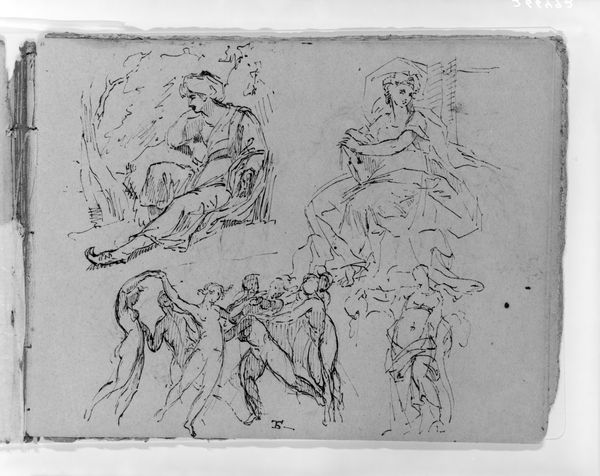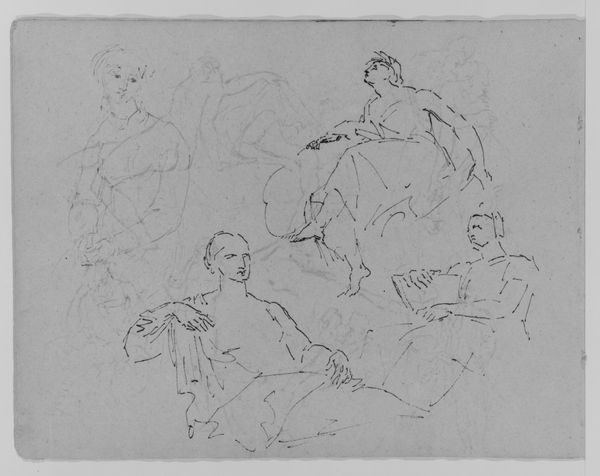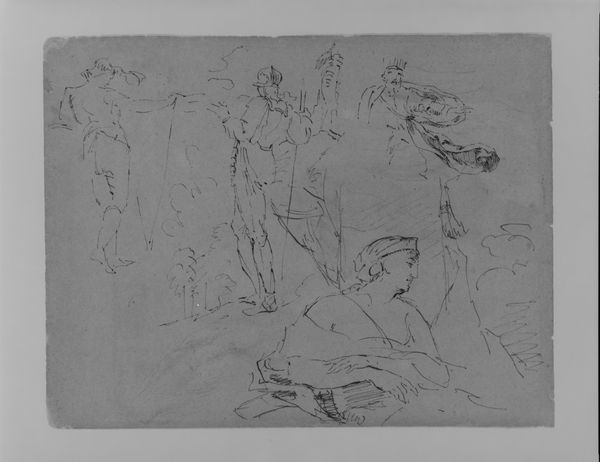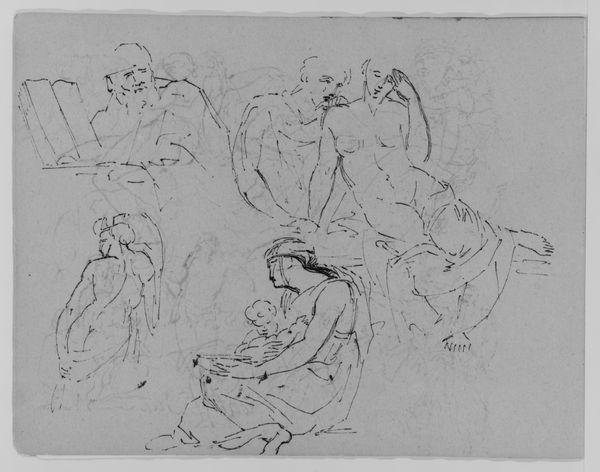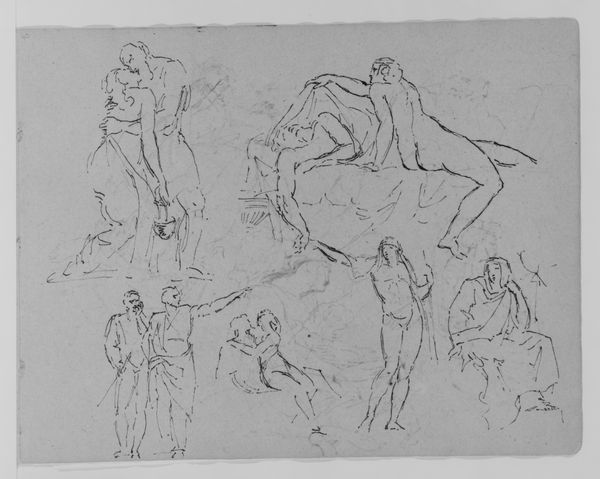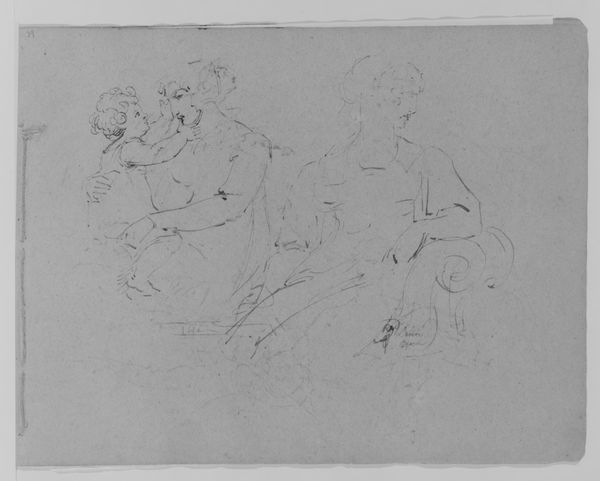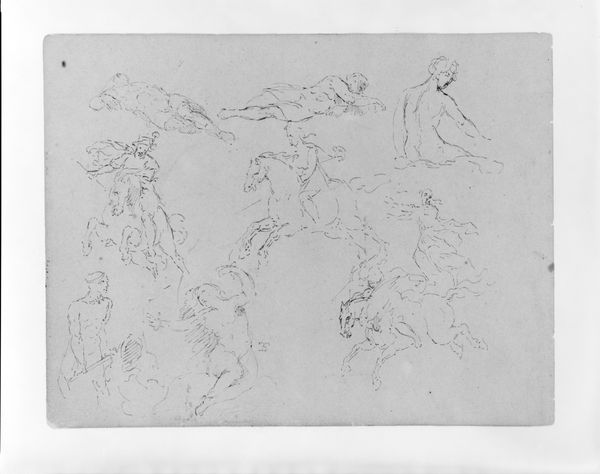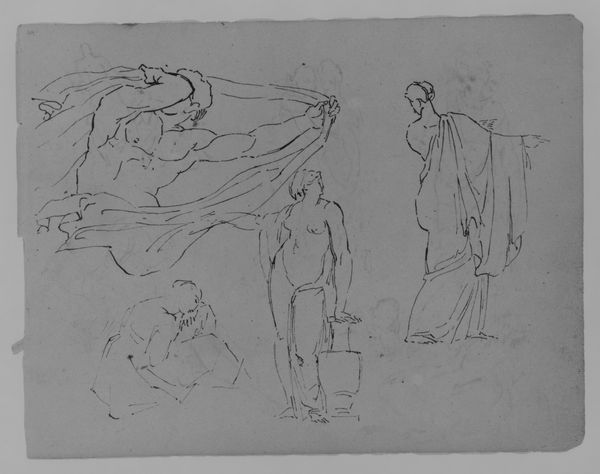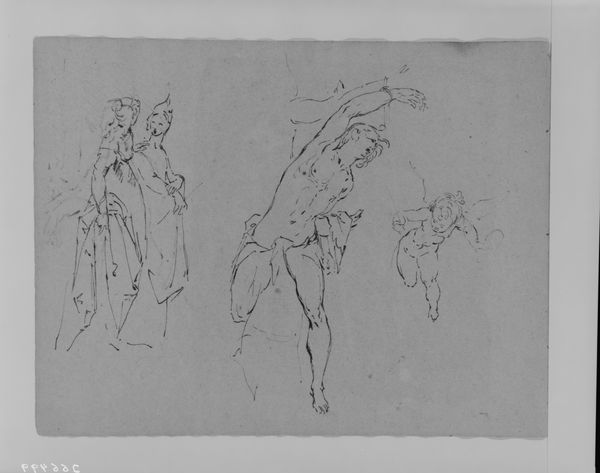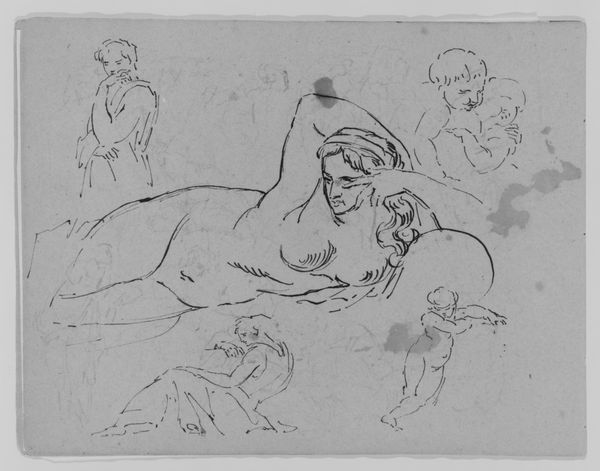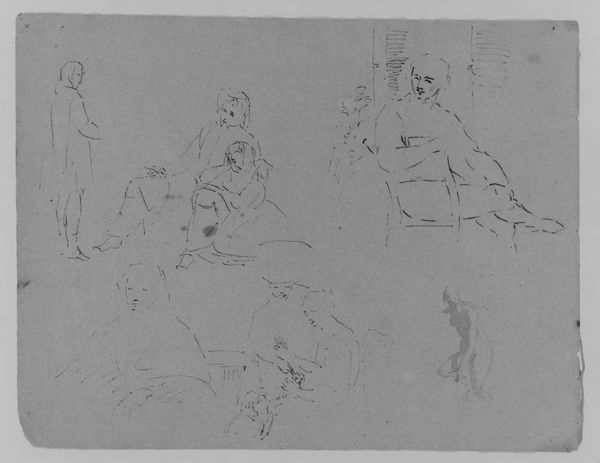
Creation of Adam; Sleeping Adam, after Michaelangelo; Other Figures; Profile of Head of Man in Helmut (from Sketchbook) 1810 - 1820
0:00
0:00
drawing, paper, pencil
#
portrait
#
pencil drawn
#
drawing
#
head
#
pencil sketch
#
charcoal drawing
#
figuration
#
paper
#
pencil
#
academic-art
#
nude
#
male-nude
Dimensions: 9 x 11 1/2 in. (22.9 x 29.2 cm)
Copyright: Public Domain
Editor: This drawing, "Creation of Adam; Sleeping Adam, after Michaelangelo; Other Figures; Profile of Head of Man in Helmet" by Thomas Sully, dates to around 1810-1820. It's rendered in pencil on paper and has such an intimate, sketchbook quality. What strikes you about this work? Curator: What I find particularly compelling is how Sully engages with the legacy of Michelangelo. He is not just copying, but actively interpreting and filtering the Renaissance master through his own historical and social lens. We must ask, what does it mean for an American artist in the 19th century to revisit such an iconic representation of the male nude, of power, and of creation itself? Editor: So, you see it as a kind of dialogue with the past, not just an exercise? Curator: Precisely. The act of sketching, the deliberate incompleteness, and the clustering of figures suggest a searching, a questioning. He's dissecting the power dynamics embedded within Michelangelo's original. Consider the 'sleeping Adam.' What commentary does that introduce on ideas of masculine virility or artistic creation itself? Editor: That's really interesting. The "Sleeping Adam" feels vulnerable, the contrast with the idealized figures is thought-provoking. Is Sully, perhaps, subtly subverting those classical ideals? Curator: It's worth considering, isn't it? The male nude, historically used to project power and dominance, is here softened, even questioned. The fragmented nature of the drawing further underscores a sense of deconstruction. Sully, working within a burgeoning nation still grappling with issues of identity and power, offers a compelling perspective. Editor: I hadn't thought about the connection to the social context of early America. Curator: These historical echoes really invite us to critically engage with both the past and present constructions of the male form, not merely replicating old hierarchies but opening avenues to challenge existing power dynamics. Editor: That's given me a lot to consider about how we approach art historical references. Thanks so much for your insight. Curator: My pleasure. These sketches give us space to imagine the socio-political climate and see canonical work with new, informed eyes.
Comments
No comments
Be the first to comment and join the conversation on the ultimate creative platform.
